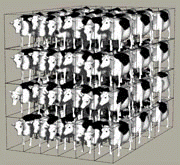Animal Science, Department of

World Congress on Genetics Applied to Livestock Production: 3rd (1986)
Date of this Version
1986
Abstract
A critical evaluation of existing beef cattle breeding programs should include such criteria as: definition of desired genetic changes in performance, breeding value estimation procedures used and accuracy of selection criteria, intensity of selection applied, use of additive differences between breeds and of non-additive variation, maintenance of genetic variability, realised genetic trends and return on investment. Each major production- marketing environment should be treated and correct account take of the industry structure. Such a study would undoubtedly highlight any inadequacies in the essential information. To extend the study to adequately cover all major beef industries would be an enormous task. However, Koch et al.(1986) make a useful contribution by concentrating on the US industry and limiting their evaluation to a subset of the above criteria. Parnell et al.(1986) and McClintock (1986) go beyond evaluation of existing programs with their original treatment of two important areas in beef cattle breeding, viz. across-heard genetic evaluation and uses of stimulation, respectively.


Comments
Published in 3rd World Congress on Genetics Applied to Livestock Production, edited by Gordon E. Dickerson and Rodger K. Johnson, 4 vols. (Lincoln: University of Nebraska Institute of Agriculture and Natural Resources, 1986). Copyright © 1986 Board of Regents University of Nebraska.